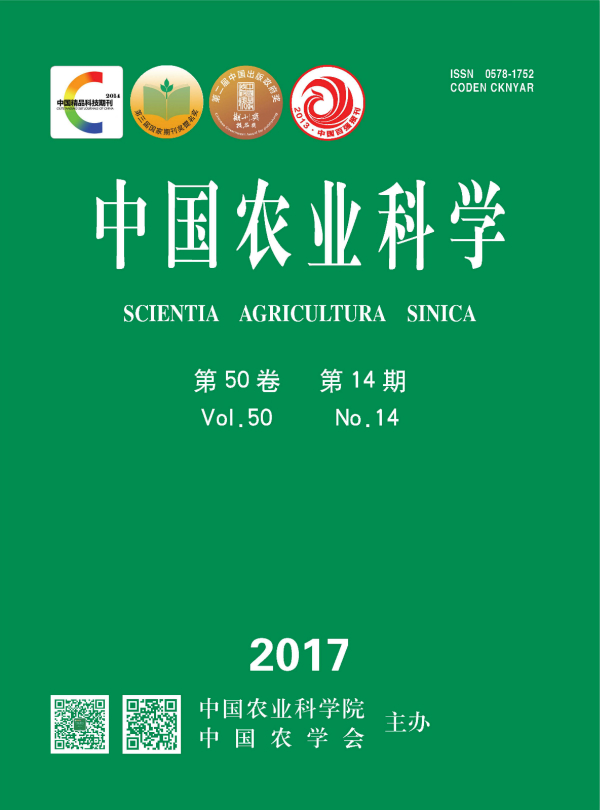-
A Spatial Partition Statistical Analysis for Quality and Agronomic Traits of Foxtail Millet Germplasm Resources
- CHEN YanQing, CAO YongSheng, CHEN LiNa, FANG Wei
-
Scientia Agricultura Sinica. 2017, 50(14):
2658-2669.
doi:10.3864/j.issn.0578-1752.2017.14.003
-
 Abstract
(
337 )
Abstract
(
337 )
 HTML
(
9 )
HTML
(
9 )
 PDF (6109KB)
(
543
)
PDF (6109KB)
(
543
)
 Save
Save
-
References |
Related Articles |
Metrics
【Objective】 The objective of this paper is to analyze the spatial distribution characteristics of related agronomic traits and quality of millet germplasm resources in China, grasp the overall quality in spatial distribution, improve the macro cognition of millet resources and effective protection and utilization. 【Method】 From the point of view of geographical space, the methods of spatial interpolation and spatial clustering were used to study the spatial distribution rules of the related traits of foxtail millet resources. Firstly, spatial interpolation was made for target traits of foxtail millet resources, partition statistics method was used to analyze national grid and interpolation data and the optimized hot spot analysis method was used to get the spatial partition data. Finally, the high value, random value and low value spatial distribution of foxtail millet related traits were found. 【Result】 The results of the distribution of the foxtail millet resources in the country show that the average of crude protein content of foxtail millet resources is (13.98±1.23)%, the range is 10.47%-17.33%, the coefficient of variation is 8.80%. The average of crude fat content is (4.01±0.38)%, the range is 3.08%-5.47%, the coefficient of variation is 9.48%. The average of grain weight per plant is (10.39±4.13) g, the range is 1.65-29.30 g, the coefficient of variation is 39.75%. The average of growth period is (111.46±10.94) d, the range is 79.15-150.43 d, the coefficient of variation is 9.81%. From the aspect of the cluster distribution areas, the average values of crude protein content in low value area, random value area and high value area are (12.80±0.70) %, (13.98±0.39)% and (15.24±0.42)%, respectively, the amplitude of variations of the three areas, respectively, are 10.47%-14.90%, 12.72%-15.30% and 13.61%-17.33%, the variation coefficients of the three areas, respectively, are 5.47%, 2.79% and 2.76%. The average values of crude fat content in low value area, random value area and high value area are (3.69±0.13) %, (3.99±0.16) % and (4.41±0.26)%, respectively, the amplitude of variations of the three areas, respectively, are 3.11%-4.39%, 3.08%-4.48% and 3.57%-5.47%, the variation coefficients of the three areas, respectively, are 3.52%, 4.01% and 5.89%. The average values of grain weight per plant in low value area, random value area and high value area are (6.49±1.84) g, (10.51±1.49)g and (14.44±2.88)g, respectively, the amplitude of variations of the three areas, respectively, are 1.65-13.38 g, 5.42-16.54 g and 7.63-29.30 g, the variation coefficients of the three areas respectively are 23.73%, 14.18% and 19.94%. The average values of growth period in low value area, random value area and high value area are (99.58±6.64)d, (111.89±2.99)d and (121.17±6.04)d, respectively, the amplitude of variations of the three areas, respectively, are 79.15-116.81d, 99.53-124.44 d and 108.34-150.43 d, the variation coefficients of the three areas respectively are6.67%, 2.67% and 4.98%. 【Conclusion】The internal differences in the high value regions of crude protein content are the minimum and these regions are mainly concentrated in Xinjiang and the northeast of Heilongjiang province. The internal differences of the low value regions are the maximum and they are mainly distributed in the central and Eastern zones. Random value regions are mainly distributed in the areas which located between high value and low value regions. The distribution of crude protein content shows an increasing trend in the two sides. On the contrary, the high value regions of crude fat content own the maximum internal differences, which are mainly concentrated in central zones of China, the low value regions’ internal differences are the minimum, which are mainly distributed in Xinjiang and the northeast of China. The distribution of crude fat content shows a decreasing trend in the two sides and the regions are relatively not regular. The internal differences in random value areas of grain weight per plant are the minimum, and the high value areas are the maximum. Ningxia, Shanxi, Shaanxi and other places belong to the high value areas of grain weight per plant, Heilongjiang, Zhejiang, northern Inner Mongolia, southern Anhui and southwestern parts belong to the low value areas. The internal differences in random value areas of growth period are the minimum, and the low value areas are the maximum. The growth period of foxtail millet in Northeast China, northwest and southwest Henan is relatively long, and Shandong, Hebei and other areas where summer foxtail millet is planted, belong to the short growth period regions.









